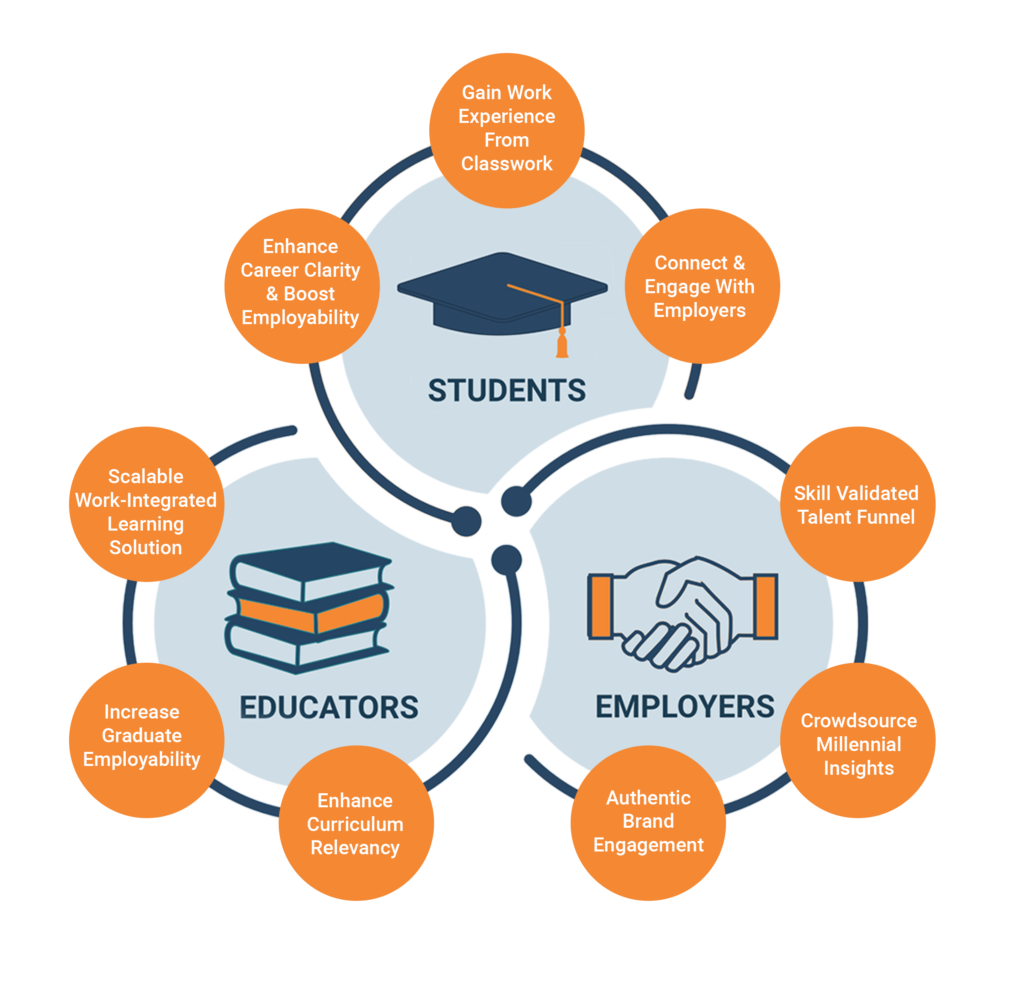Imagine a classroom where students are the architects of their own education, where learning is a journey and not just a destination. This is the world of Experiential Learning.
Experiential learning is a way of learning by doing. Instead of simply reading about a topic or listening to a lecture, experiential learning involves actively participating in practical scenarios. This method is widely used in education, corporate training, therapy, and personal development. Let us look at why is this type of learning necessary.
- It enhances factual understanding of concepts
- It develops practical skills such as communication, critical thinking, and leadership
- Provides career preparation and work experience
- Supports personal growth and increases self-confidence
- Increases relevance and engagement in the learning process
- It fosters active participation and collaboration
- Promotes deeper understanding through reflection and application
Types of Experiential Learning
- Adventure-Based Learning
This involves outdoor activities like rock climbing, rafting, or backpacking to develop skills like teamwork, leadership, and communication. These activities are designed to challenge participants physically, emotionally, and mentally, pushing them outside of their comfort zones and fostering growth and personal development.
- Service Learning
It can take many forms, from volunteering at a local food bank to working with a non-profit organization on a specific project. The goal of service learning is to provide students with an opportunity to apply their knowledge and skills in a real-world setting, while also giving back to the community. Service learning can be used to teach a variety of subjects, including social studies, science, and language arts.
- Immersive Learning
Immersive learning is an educational approach that involves creating realistic, engaging experiences that allow students to explore and understand complex concepts and real-world issues. From virtual reality simulations to speech recognition exercises, the goal is to improve retention capability, participation, and learning analytics, in an interactive way.
- Project-Based Learning
In this type of learning, students work on real-world projects that challenge them to use their creativity, problem-solving skills, and knowledge in a practical setting. It can be used to teach a variety of subjects, including math, science, management, and language arts. Projects may involve independent research, collaboration with classmates, or the creation of a tangible product or presentation.
- Case Studies
Case studies are an educational approach that involves analyzing real-life examples of businesses, organizations, or individuals to understand the challenges they face and the decisions they make. Students are typically asked to analyze a particular situation and make recommendations based on the information they have gathered. You can ask any academic essay writer to know more about it.
- Simulation and Role-Playing
The goal of these exercises is to provide students with an opportunity to experience a particular situation or scenario in a safe, controlled environment, which can lead to a deeper understanding and retention of information.
- Field Trips and Excursions
Field trips and excursions comprise visiting real-world locations, such as museums, factories, or government agencies, to gain a deeper knowledge of the topics being studied. Suppose, your college takes you to a printing press and later asks you to write custom essay paper based on your experience. You will be able to write your points well enough by seeing and communicating by yourself. Therefore, it provides opportunities for students to interact with experts and professionals in the field, and to make connections between the subject matter and their own lives.
- Internships and Apprenticeships
Internships typically involve working part-time or full-time in a company or organization, under the supervision of experienced professionals, to gain experience in the corporate world and develop practical and technical skills related to your career goals. Apprenticeships are similar, but they typically involve a longer-term commitment, and they provide students with more in-depth, structured training and mentorship.
- Cooperative and Collaborative Learning
This forms of experiential learning involve students working together in small groups to achieve a common goal. In cooperative learning, students are divided into teams and each team member is responsible for completing a specific task. In collaborative learning, students work together to complete a project, with each student contributing their unique skills and perspectives. Both approaches foster communication, teamwork, and analytical skills.
- Entrepreneurial Education
Students learn the techniques and processes that are needed to start and run their own businesses. It can take many forms, like courses that teach the basics of starting a business, and programs that provide students with the opportunity to launch their own ventures. If a student is interested in entrepreneurship might participate in a program that provides mentorship and support as they develop and launch their own business idea.
There are numerous reasons why schools should incorporate more experiential learning into their curriculums, which you can look at https://penmypaper.com/. As students face a rapidly changing world, schools must equip them with the knowledge and skills necessary to succeed. Implementing more experiential learning can help achieve this goal and provide students with a well-rounded education that will serve them for years to come.


More Stories
The Art and Science of Leak Detection
How Professional Pool Cleaners Work Their Magic
Behind the Scenes: What Really Happens at Your Favorite Nail Salon